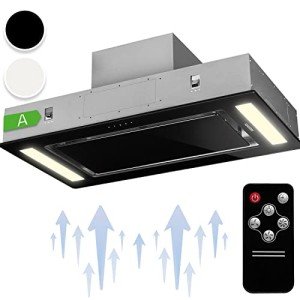A Guide To Island Vent Hood From Beginning To End
How to Aerate an Island Vent Hood Suspended from the ceiling, an island vent hood assists flow air and keeps your kitchen without smoke and odors. It's likewise a stylish function that boosts your cooking area. Ventilation types consist of external venting, which presses air through ductwork to the beyond your home, and recirculating designs that filter and recycle cooking fumes. Some hoods can even be converted between one and the other. Ventilation Unlike wall-mounted range hoods that vent air vertically through the wall to the outside, island vent hoods utilize ductwork that goes through the ceiling to exhaust the cooking location to the outdoors. The difference is that they can likewise be utilized to recirculate air. Discover our choice of commercial and designer customized hoods with powerful ventilation systems. With personalized requirements, find the ideal hood for your kitchen space. Dacor's ConnectOn auto-responsive technology switches on the hood and increases the fan speed in response to the cooktop, providing effective performance while utilizing minimal sound. It's just another method that you can cook with self-confidence. Add a touch of contemporary with this stainless steel pyramid-style wall-mount canopy hood. This hood with dignity accentuates advanced cooking areas that follow a more traditional design style and clears the air of smoke, steam and cooking odors. Style Unlike wall-mounted range hoods that are mounted versus the wall, island vent hoods are suspended from the ceiling over an island or peninsula cooktop or range. They also utilize ductwork to tire air out of the home. This design is perfect for cooking areas that have a great deal of open space, and it assists to add visual interest to your space. This brand-new home features Blackberry stained cherry cabinets on the parameter, and a natural stacked stone on the island and vent hood to complement the Gunstock stain on the cabinets. 10ft ceilings and a skylight help to keep the kitchen intense and roomy. Sound While cooker hoods for islands does a fantastic task of filtering smoke, grease and odors out of your kitchen, it can likewise create some sound that disrupts the serenity of your cooking space. Fortunately, there are some strategies you can use to lower this sound and allow you to cook in peace. One of the main reasons for excess range hood sound is brought on by fan motor issues such as stiff bearings or improperly lubed fans that produce a loud humming sound. Ductwork can also contribute to this problem especially if the ducts are too small or if they are blocked with dust. The very best method to reduce noise is to make sure that your vent hood has the greatest airflow score that you can pay for. The Home Ventilating Institute (HVI) suggests an air flow rate of 100 to 250 cfm for wall-mounted hoods over 30-inch broad ranges. This hood must also have a multispeed fan to permit lower fan speeds throughout light cooking. One of the most basic methods to lower the sound is to make sure that the ducting is smooth-walled, as corrugated duct limits air flow. You need to likewise keep the duct runs as short and straight as possible to avoid any kinking. Installation Ventilation of island range hoods is a various procedure than wall-mounted systems, since they are suspended from the ceiling over an island or peninsula cooktop or stove. They usually need a duct that goes through the ceiling and out through the roof, which can be a complex project for an unexperienced house owner. In addition, they must be set up at least 24-inches to 36-inches above the cooking surface area. The height might differ, depending upon the size of the hood and the ceiling. If you have existing ducting and electrical wiring in the kitchen ceiling, this type of vent hood is fairly easy to install. If not, it's advised that you seek advice from an expert. To start installation, make certain the hood can fit through the opening you have actually picked for the vent which it's the ideal width to accommodate the ductwork and exhaust. If the hood is too large, it can reduce the efficiency of the vent and will increase noise levels. Next, cut a small hole in the ceiling and use a wire cutter to inspect that there's no pipes or electrical wiring near the hole. If there is, consider working with an expert for the job or changing to a recirculating unit.  If there isn't, you can begin the bigger vent hole by drilling locator holes with a drill and a ½-inch masonry bit in each corner of the area. Then utilize click through the following article to cut the bigger vent hole. Lastly, include a drywall spot and paint to finish the job. When the hood is in location, you can run the electrical wiring and link it to your breaker box. Follow your producer's guidelines for complete installation information.
If there isn't, you can begin the bigger vent hole by drilling locator holes with a drill and a ½-inch masonry bit in each corner of the area. Then utilize click through the following article to cut the bigger vent hole. Lastly, include a drywall spot and paint to finish the job. When the hood is in location, you can run the electrical wiring and link it to your breaker box. Follow your producer's guidelines for complete installation information.